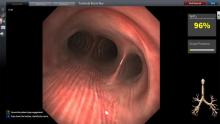The following three guidelines relate to the management of the unanticipated difficult airway in children aged 1 to 8 years.
They are:
- Difficult mask ventilation during routine induction of anaesthesia in a child aged 1 to 8 years
- Unanticipated difficult tracheal intubation during routine induction of anaesthesia in a child aged 1 to 8 years
- Cannot intubate and cannot ventilate (CICV) in a paralysed anaesthetised child aged 1 to 8 years
Paediatric patients are looked after in many hospitals and specialist paediatric services are neither necessary nor appropriate in all settings. The target audience for these guidelines is for the non specialist anaesthetist who wishes to learn or maintain paediatric airway skills, rehearse unexpected difficult airway scenarios and teach good practice.
These guidelines are clinical, but are backed by a robust process. A formal paper giving all the background data used to develop these guidelines will be published in the near future.
Internationally it was clear that most units are using airway management guidelines for children which have been expanded from adult practice. We have therefore specifically developed these guidelines following an exhaustive process which involved a Delphi analysis (which ensured careful refection of each step of the pathway, and a grading of how confident an expert group was in endorsing each step), and an extensive literature review. Following this we had further external reviews, and placed the guideline on the APA website requesting comments-all views were considered. There is very little grade 1, (randomised control trial), evidence to support good practice in the management of the difficult paediatric airway, and guidance must therefore be essentially a clinical issue.
The Guidelines Group, supported by the Association of Paediatric Anaesthetists, the Difficult Airway Society and liaising with the RCoA, have taken a careful and thorough approach to review current practice. We hope these guidelines will be used widely, and would encourage feedback. We trust that, long term, they will be of use to all anaesthetists who manage children in day to day clinical practice, and those who teach safe airway techniques.
Downloads
Unanticipated difficult intubation
Paediatric Airway Guidelines Group
Ann Black, Chair: Paediatric Airway Guidelines Group, [email protected]
Paul Flynn, Royal National Orthopaedic Hospital, Stanmore
Mansukh Popat, DAS, John Radcliffe Hospital, Oxford
Helen Smith, Addenbrookes University Hospital, Cambridge
Mark Thomas, Great Ormond Street Hospital, London
Kathy Wilkinson, Norfolk and Norwich University Hospital (APA President)
The DAS algorithms can be reproduced for non-commercial purposes without explicit request for permission as long as there is proper citation. For more information click here
